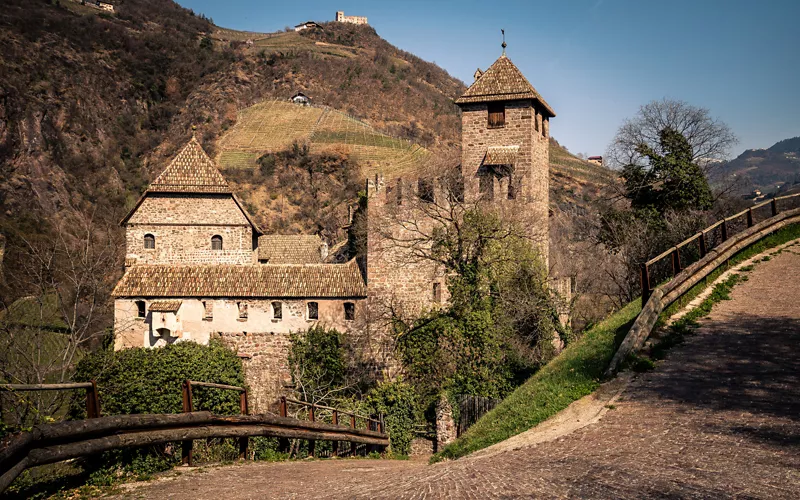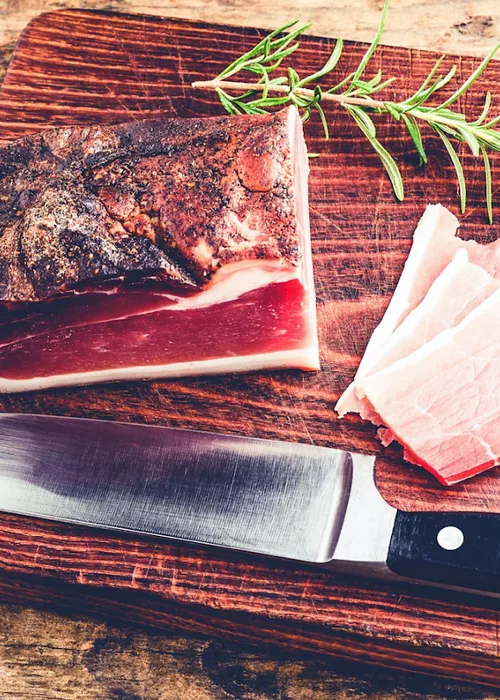Atmospheric nature, art, culture, sport and good food: welcome to Alto Adige
4 minutes
In Alto Adige, the imposing peaks of the Dolomites form a backdrop to gentle slopes covered with vineyards, where rural life blends with modernity and visitors feel at home.
Origins and historical background on Alto Adige

The long process of Germanisation of Alto Adige began immediately after the collapse of the Western Roman Empire. Its territory was included in the County of Tyrol for more than 5 centuries and then passed largely under the Kingdom of Bavaria between 1806 and 1918.
After the end of World War I, it returned to Italy, but the protection of the German language minority in the area had to wait until the Treaty of Paris of 5 September 1946, better known as the De Gasperi-Gruber Agreement.
Inhabited since the Copper Age, Alto Adige has hidden traces of a lost civilisation for millennia. Here, at the foot of the Similaun glacier at 3213 metres, the Similaun Man, the perfectly preserved mummy of a man who lived between 5300 and 5200 years ago, was found in 1991.
Main cities in Alto Adige

Lying in a basin surrounded by mountains, Bolzano is a city full of charm, a meeting point between Mediterranean and Central European cultures, as is evident from its architecture, alleys, arches and small squares in its historic centre. It is home to the Alto Adige Museum of Archaeology in which Ötzi, known throughout the world as the Similaun mummy, is preserved. On the outskirts of the town stands Castel Roncolo, an imposing castle dating from 1237 in which a stupendous cycle of secular frescoes from medieval times is preserved.
In summer and winter, the Alpe di Siusi, Europe's largest alpine pasture, welcomes thousands of visitors in search of sun, romance and breathtaking scenery. There, in the beautiful Gardena Valley, are the beautiful villages of Castelrotto, Siusi allo Sciliar, Fiè allo Sciliar and Tires al Catinaccio. With skis on your feet, you will have the best slopes of your life.
Merano with its thermal baths offers all-round wellbeing with 25 pools, sauna area and state-of-the-art spa just a stone's throw from the ski area with pistes of varying difficulty and a snow park.
Bressanone, in the Eisack Valley, is one of the most picturesque in South Tyrol and a magical place for skiers.
If you want to discover the true gem of the Val Pusteria, Brunico and its imposing bishop's castle await you just one hour from Bolzano.
The Tre Cime di Lavaredo, symbol of the Dolomites, are a must-see in Alto Adige for skiers and hikers. If you want to reach the most popular vantage point, you can choose Rifugio Locatelli at an altitude of 2,450 metres.
What to see in Alto Adige

The natural wonders in Alto Adige follow one after the other.
Lake Braies, located in the valley of the same name at an altitude of 1,496 metres, is an emerald jewel surrounded by the Dolomites.
Smaller, but no less impressive, is Lake Carezza in Val d'Ega, also known as Rainbow Lake because of the reflections in the sunlight on the basin's emerald water.
Also discover Lake Rèsia in the Vinschgau, with the old bell tower of Curon rising from the water.
The Stanghe waterfalls in Racines are a spectacle of nature that you can discover by walking on wooden bridges through the gorge carved by the force of the water over the centuries.
If you are looking for peace and relaxation in the heart of the Dolomites, get lost in Val di Funes, while for skiing on the best slopes in the region, your point of reference must be the Dolomiti Superski with more than 1,200 kilometres of slopes divided into 12 different ski areas, including the Plan de Corones area with eight lifts to try.
Just above the village of Ortisei, you can reach Mount Seceda by cable car, but for a truly unique experience, we recommend the ski tour around the great Sella massif, known as the Sellaronda for its circular route.
Unusual places in Alto Adige

If you are looking for unusual places in Alto Adige, off the beaten track, you should explore the Obereggen hiking area in Val d'Ega, with over 48 kilometres of slopes.
For a break from skiing, you can choose between the Gardens of Trauttmansdorff Castle in Merano, a natural amphitheatre with more than 80 botanical environments and a surface area of 12 hectares, and the earth pyramids of Renon, a natural monument on the outskirts of Bolzano that dates back more than 25,000 years.
Typical Alto Adige products

How can one resist typical Alto Adige products? Impossible!
From delicious pretzels to tasty bratwurst, the area's cuisine still shows the influences of Germanic rule.
If you love cheese, you must try Fontal, perhaps combined with Speck Alto Adige.
Grab a slice of bread, berry jam and discover the unique taste of malga butter or, alternatively, snack on Alto Adige PGI apples from the Autonomous Province of Bolzano.
And if you are looking for a unique spirit, the Alto Adige Hay Grappa will warm you even on the coldest days with its delicate aromas reminiscent of the scent of mountain pastures and mown meadows.
Events in Alto Adige

If you decide to spend the Christmas period in Alto Adige, you cannot miss the opportunity to visit the charming Christmas markets that are set up from the end of November to 6 January in Bolzano, Merano, Bressanone and Brunico.
Spring, however, also offers unique experiences in the region. Throughout the month of April, you can spend unforgettable days in Lana for the flower festival, while between the end of April and mid-May, the Bolzano Flower Festival offers a rich programme of dance, music and theatre of the highest level in an evocative journey through nature and art.
On 1 May, head to Naz-Sciaves for the Royal Blossom Festival with a large costume parade, folk dances and a market of local crafts and agricultural products.




























